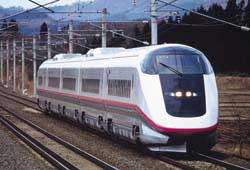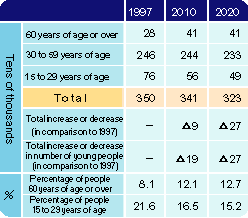9.
Labor Availability Problems
Some say that the lack of young workers - that results from the
reduction in the number of young people in our population - can
be overcome by encouraging women and the elderly into the workforce,
or by utilizing information technology. Judging by the age of those
currently employed in the transport industry, the "aging"
will be relatively insignificant until around 2010. However, there
is no room for optimism as the transport industry includes many
labor-intensive areas, and it is possible that this problem will
surface sooner or later in specific areas such as the distribution
industry.
Also, with the transport industry unable to solve labor-shortage
problems by moving their production bases offshore, as their counterparts
in manufacturing are able to do, the issue of accepting foreign
workers will need to be considered.
For this reason, in preparation for constrictions in the number
of young workers available, early consideration, through joint male-female
planning initiatives, needs to be given to adjustments which allow
the active utilization of women elderly workers in the workforce.
There is also a need to consider how the nation should, on a more
general level, deal with the possibility of utilizing foreign labor.
|
|
 |
Projections of number of people engaged in transport related work
|


